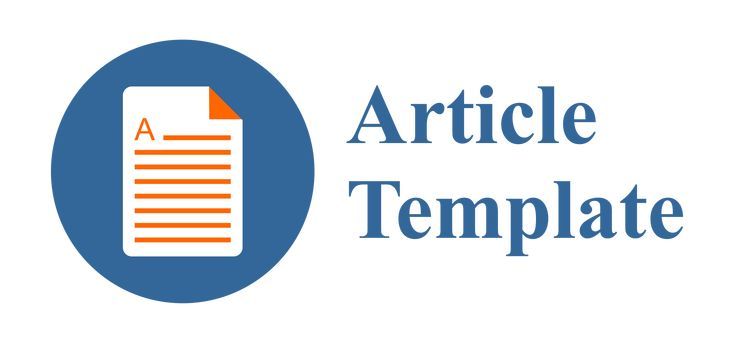Mengidentifikasi Strategi Promosi pada Jasa Penjualan Saldo Digital menggunakan Pendekatan Clustering
DOI:
https://doi.org/10.29408/edumatic.v7i1.7385Keywords:
clustering, k-means, digital balance, silhouetteAbstract
The rapid development of information technology has impacted various fields, one of which is cellular telephony. The increasing number of people who have cell phones impacts the need for digital products, especially digital balances, which are increasing. This study aims to identify digital balance sales so that they become input, especially the ZAR counter-promotion strategy. This study uses the clustering method and the K-Means Algorithm to obtain several clusters of transaction types based on the nominal sales price. The silhouette is used to find the number of clusters. The dataset used in this study is the sale of digital ZAR counterbalances from November 2021 to October 2022. This research resulted in a total of 2 clusters. First cluster with low price nominal sales was 49,213 data, while second with high nominal price sales was 3,076. The study results show that the k-means algorithm can be used to cluster sales of ZAR counter digital balances, and ZAR counter digital balances are quite good. Still, there is data in clusters with high nominal prices. ZAR counter owners can create promotional strategies by providing discounts below 142,000 so that customers who buy at a high nominal price move to a lower nominal price.
References
Anggarwal, C. (2015). Data Mining. In IBM T.J. Watson Research Center (Vol. 14, Issue 3). Springer.
Aqila, N., & Bijaksana, M. arif. (2020). Developing Set of Word Senses of Vocabulary in Al-Qur’an. Edumatic : Jurnal Pendidikan Informatika, 4(1), 83–90. https://doi.org/10.29408/edumatic.v4i1.2119
Ashari, I. A., Negara, I. S. M., & Sumantri, R. B. B. (2022). Evaluasi Pembayaran Keuangan Siswa berdasarkan Penghasilan Wali Siswa menggunakan Metode Clustering K-Means. Edumatic: Jurnal Pendidikan Informatika, 6(2), 324–333. https://doi.org/10.29408/edumatic.v6i2.6395
Astuti, N., Utamajaya, J. N., & Pratama, A. (2022). Penerapan Data Mining Pada Penjualan Produk Digital Konter Leppangeng Cell Menggunakan Metode K-Means Clustering. Jurnal Riset Komputer), 9(3), 2407–389. https://doi.org/10.30865/jurikom.v9i3.4351
Dana, R. D., Rohmat, C. L., & Rinaldi, A. R. (2018). Strategi Marketing Penerimaan Mahasiswa Baru Menggunakan Machine Learning dengan Teknik Clustering. Jurnal Pengembangan IT (JPIT), 04(2), 201–204. https://doi.org/10.30591/jpit.v4i2-2.1879
Hadikristanto, W., & Setyaningsih, A. (2020). Penerapan Algoritma Naive Bayes Untuk Menentukan Klasifikasi Produk Terlaris Pada Penjualan Pulsa. Sigma, 11(2), 49–58.
Haryatmi, E., & Pramita Hervianti, S. (2021). Penerapan Algoritma Support Vector Machine Untuk Model Prediksi Kelulusan Mahasiswa Tepat Waktu. Jurnal RESTI (Rekayasa Sistem Dan Teknologi Informasi), 5(2), 386–392. https://doi.org/10.29207/resti.v5i2.3007
Hermawan, A., Hartati, T., & Wijaya, Y. A. (2022). Analisa Keamanan Data melalui Website Zahra Software Menggunakan Metode Keamanan Informasi CIA Triad. JPIT, 7(3), 125–130.
Indriyani, F., & Irfiani, E. (2019). Clustering Data Penjualan pada Toko Perlengkapan Outdoor Menggunakan Metode K-Means. JUITA : Jurnal Informatika, 7(2), 109–114. https://doi.org/10.30595/juita.v7i2.5529
Larose, D. T., & Larose, C. D. (2005). Discovering Knowledge in Data: an Introduction to Data Mining (Vol. 100, Issue 472). New Jersey: John Wiley & Sons. https://doi.org/10.1002/0471687545
Mardalius, M. (2018). Pemanfaatan Rapid Miner Studio 8.2 Untuk Pengelompokan Data Penjualan Aksesoris Menggunakan Algoritma K-Means. Jurteksi, 4(2), 123–132. https://doi.org/10.33330/jurteksi.v4i2.36
Nishom, M., & Fathoni, M. Y. (2018). Implementasi Pendekatan Rule-Of-Thumb untuk Optimasi Algoritma K-Means Clustering. Jurnal Informatika: Jurnal Pengembangan IT, 3(2), 237–241. https://doi.org/10.30591/jpit.v3i2.909
North, M. (2012). Data Mining For the Masses. Georgia: A Global Text Project.
Nuiaa, R. R., Alsaeedi, A. H., Manickam, S., & Al-Shammary, D. E. J. (2022). Evolving Dynamic Fuzzy Clustering (EDFC) to Enhance DRDoS DNS Attacks Detection Mechnism. Intelligent Engineering and Systems, 15(1), 509–519. https://doi.org/10.22266/IJIES2022.0228.46
Nurdiyansyah, F., Arifin, S., & Marisa, F. (2018). Penerapan Clustering Algorithm Untuk Mendukung Promosi Server Pulsa Reload. J I M P - Jurnal Informatika Merdeka Pasuruan, 3(2), 73–78. https://doi.org/10.37438/jimp.v3i2.174
Palembang, C. F., & Palembang, S. P. (2021). Pengelompokkan Tingkat Harga Cabai Rawit Berdasarkan Provinsi di Indonesia Menggunakan Algoritma K-Means Clustering. Variance, 3(2), 48–60. https://doi.org/10.30598/variancevol3iss2page48-60
Pramadhana, D. (2021). Klasifikasi Penyakit Diabetes Menggunakan Metode CFS Dan ROS dengan Algoritma J48 Berbasis Adaboost. Edumatic: Jurnal Pendidikan Informatika, 5(1), 89–98. https://doi.org/10.29408/edumatic.v5i1.3336
Purwani, F., Wahyudi, R. T., & Jaya, I. D. (2022). Penerapan Algoritma K-Nearest Neighbor dengan Euclidean Distance untuk Menentukan Kelompok Uang Kuliah Tunggal Mahasiswa. Edumatic: Jurnal Pendidikan Informatika, 6(2), 344–353. https://doi.org/10.29408/edumatic.v6i2.6547
Rahayu, S., Yumarlin, M. Z., Bororing, J. E., & Hadiyat, R. (2022). Implementasi Metode K-Nearest Neighbor (K-NN) untuk Analisis Sentimen Kepuasan Pengguna Aplikasi Teknologi Finansial FLIP. Edumatic: Jurnal Pendidikan Informatika, 6(1), 98–106. https://doi.org/10.29408/edumatic.v6i1.5433
Siburian, T., Safii, M., & Parlina, I. (2019). Penerapan Algoritma K-Means Clustering untuk Pengelompokan Harga Eceran Beras di Pasar Tradisional Berdasarkan Wilayah Kota. Prosiding Seminar Nasional Riset Information Science (SENARIS), 1(100), 927–936. https://doi.org/10.30645/senaris.v1i0.101
Sihombing, L. O., Hannie, H., & Dermawan, B. A. (2021). Sentimen Analisis Customer Review Produk Shopee Indonesia Menggunakan Algortima Naïve Bayes Classifier. Edumatic: Jurnal Pendidikan Informatika, 5(2), 233–242. https://doi.org/10.29408/edumatic.v5i2.4089
Syahputra, T., Halim, J., & Sintho, E. P. (2018). Penerapan Data Mining Dalam Menentukan Pilihan Jurusan Bidang Studi SMA Menggunakan Metode. Jurteksi, 4(2), 1–4.
Takdirillah, R. (2020). Penerapan Data Mining Menggunakan Algoritma Apriori Terhadap Data Transaksi Penjualan Bisnis Ritel. Edumatic: Jurnal Pendidikan Informatika, 4(1), 37–46. https://doi.org/10.29408/edumatic.v4i1.2081
Uska, M., Wirasasmita, R., Usuluddin, U., & Arianti, B. (2020). Evaluation of Rapidminer-Aplication in Data Mining Learning using PeRSIVA Model. Edumatic: Jurnal Pendidikan Informatika, 4(2), 164–171. https://doi.org/10.29408/edumatic.v4i2.2688
Widiawati, C. R. A. dkk. (2021). K-Means Clustering Berdasarkan Otsu Thresholding untuk Segmentasi Inti. Jurnal RESTI (Rekayasa Sistem Dan Teknologi Informasi), 1(5), 907–914. https://doi.org/https://doi.org/10.29207/resti.v4i5.2309
Wiguna, R. A. raffaidy, & Rifai, A. I. (2021). Analisis Text Clustering Masyarakat Di Twitter Mengenai Omnibus Law Menggunakan Orange Data Mining. Journal of Information Systems and Informatics, 3(1), 1–12. https://doi.org/10.33557/journalisi.v3i1.78
Wulandari, N., Farida, I. N., & Mahdiyah, U. (2022). Implementasi Metode K-Means Clustering Dalam Pengadaan Barang Di Toko N-Case. Prosiding SEMNAS Inovasi Teknologi, 6(1), 308–313.
Downloads
Published
How to Cite
Issue
Section
License
All articles in this journal are the sole responsibility of the authors. Edumatic: Jurnal Pendidikan Informatika can be accessed free of charge, in accordance with the Creative Commons license used.

This work is licensed under a Lisensi a Creative Commons Attribution-ShareAlike 4.0 International License.




